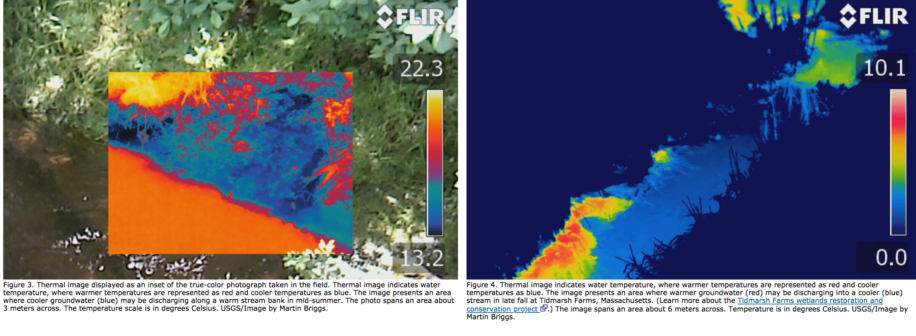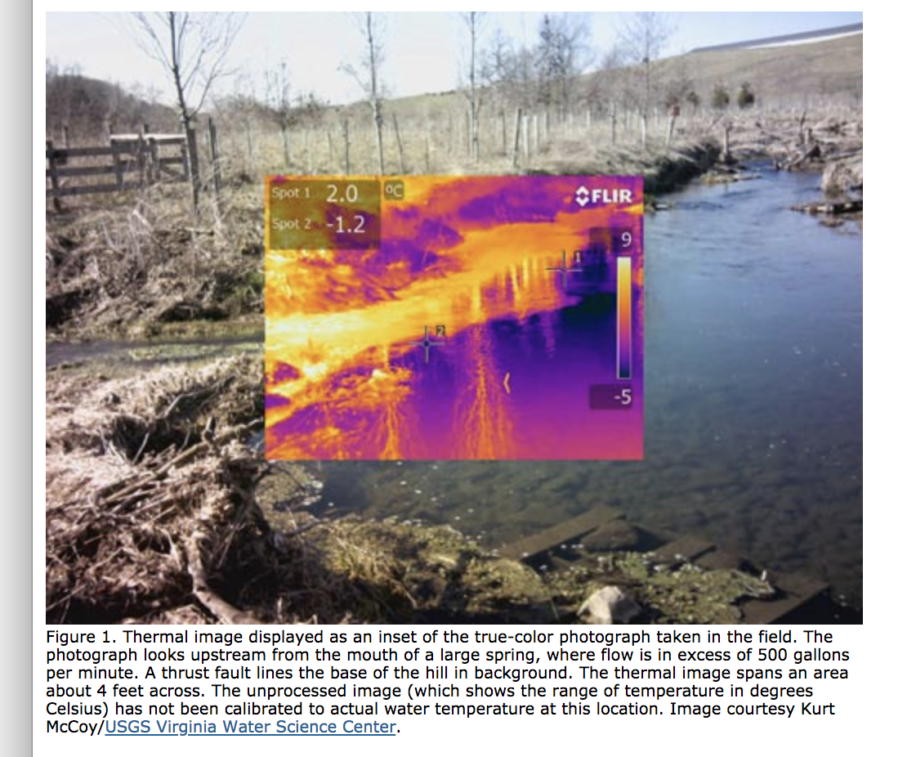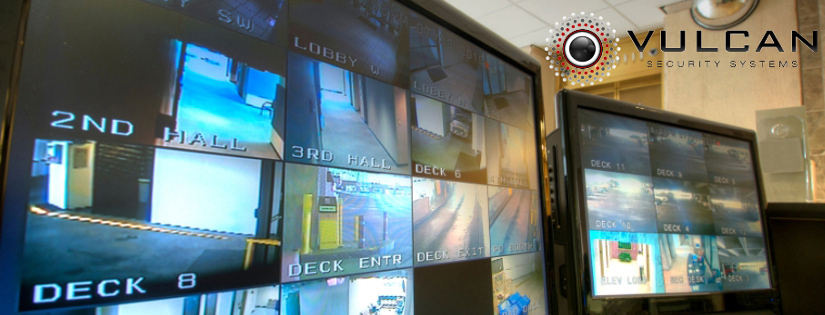Did you know that thermal cameras are being deployed around the world to monitor water flow and water temperature?
In this article we’ll look at three application scenarios for using thermal security cameras to monitor water flow, groundwater seepage, and water quality.
- Flash Flood Events & Public Safety
- Groundwater & Surface Water Flow (and the interaction between)
- Surface Water Discharge & Quality For Both Operational Management & Compliance
Thermal Security Camera Applications for Flooding & Public Safety
Thermal cameras can be used to monitor water levels and flow velocity in areas subject to occasional flash flooding from significant localized rain events.
Thermal cameras can also be successfully used in the less frequent, but even more dangerous, flooding that occurs during natural disasters like the recent Hurricane Florence that dumped 20-30+ inches of rain across North Carolina.
As you can see in this video (below), the thermal images captured by a Mobotix thermal-sensor equipped camera reveal the flooding on this city street and parking area. In contrast, the optical image shows some indication of water pooling, but is not particularly helpful in assessing the extent of flooding.
In our previous article, we described the thermal radiometry technology used in Mobotix video cameras.
Video cameras with thermal sensors are also being used to study water migration, for environmental monitoring and research into groundwater / surface water relationships.
Thermal Camera Applications for Groundwater & Surface Water Flow
The U.S. Geological Survey has started using hand-held thermal imaging cameras for real-time monitoring and study of groundwater and surface water flow and interactions between discharges and water quality.

Image [Above]Credit: U.S. Geological Survey Department of the Interior/USGS U.S. Geological Survey/photo by Martin Briggs: Study / Image Source Page: https://water.usgs.gov/ogw/bgas/gwsw/

For more information on this research by the USGS visit: https://water.usgs.gov/ogw/bgas/thermal-cam/
This video (below) from the Geological Survey of Arkansas includes a section on the use of thermal radiometry to track groundwater migration into streams and other surface water in the Ozarks.
According to the Arkansas GSA summary of this study:
“Using the [handheld thermal] camera, scientists observed discrete areas of groundwater discharge from a large spring as well as areas of diffuse, slow-moving flow through stream banks. In most cases, these areas of groundwater discharge would not have been visible to the naked eye. As a result of the successful test run of the equipment, project scientists plan to use thermal imaging cameras to guide efforts to quantify the amount of groundwater contribution to streams in areas of water quality concern and to inform groundwater flow models developed as part of the groundwater availability study.” [Emphasis added]
Source & for more on the Ozark aquifer research using thermal camera imaging: https://water.usgs.gov/ogw/bgas/thermal-cam/ozarks.html
Water Temperature Monitoring For Discharge Compliance & Fisheries Management
In addition to the handheld thermal camera research applications, fixed-location thermal security cameras could easily be deployed by businesses, governmental agencies and/or environmental organizations to monitor the thermal effect of discharges into rivers, streams and lakes.
This type of research is valuable for reasons beyond fish conservation and environmental protection.
Sport fishing in Alabama has a huge economic impact.
The health of Alabama fish populations and fisheries management is vital to maintaining and growing Alabama’s outdoor recreation and tourism economy. If Alabama’s lakes and rivers can’t sustain healthy fish populations the fishing enthusiasts will take their tourism dollars elsewhere. Water temperatures directly impact the health of watersheds and the lakes and rivers where recreational and competitive fishing takes place.
Business applications include aquaculture operations, like catfish and freshwater shrimp farms, as well as environmental stewardship and compliance monitoring.
Next we’ll take a look at two examples of how thermal cameras are being used by researchers with the US Geological Survey to monitor and understand groundwater discharge into streams and rivers.
Scientists with the US Geological Survey (USGS) Leetown Science Center used thermal cameras to study the effects of groundwater discharge on trout streams and to aid in developing models of fish population dynamics.
The video [below] is from this USGS Leetown Science Center research. According to the research summary, the study
“…demonstrates how the camera can be used to identify thermal anomalies interpreted to represent groundwater/surface-water interactions in the field. In this video, warmer groundwater (yellow) is discharging from a stream bank at the top of the image and mixing into cooler stream water toward the bottom of the image (purple).”
Source: https://water.usgs.gov/ogw/bgas/thermal-cam/leetown.html
Another example is the use of thermal cameras for trout stream monitoring and restoration efforts by the USGS Virginia Water Science Center.

Study: https://water.usgs.gov/ogw/bgas/thermal-cam/vawsc.html
This study can be found at: https://water.usgs.gov/ogw/bgas/thermal-cam/vawsc.html
Water Seepage from Mining Site Detected Using Thermal Camera
In one recent project hydrogeologic researchers used thermal cameras to measure seepage from an abandoned mining pit in Quebec, Canada.
https://blogs.egu.eu/network/water-underground/2016/03/29/can-we-use-an-infrared-camera-to-tell-us-how-much-groundwater-is-coming-out-of-the-side-of-a-cliff/
Vulcan Security Systems will explore the use of thermal cameras in mining industry applications in a separate article.
Thermal Cameras for Water System Management
To close out this article on thermal camera applications in relation to water and water system management, the Las Cruces Utilities department uses thermal cameras to make sure that the electrical control systems at pumping and booster stations are functioning properly to keep water flowing into homes. [The use of thermal cameras in these types of industrial operations settings is the subject of our next article in this series on applications for thermal cameras.]
Vulcan Security Systems is a leading provider of video security technology to businesses in a wide range of industries across the Central and North Central region of Alabama.

